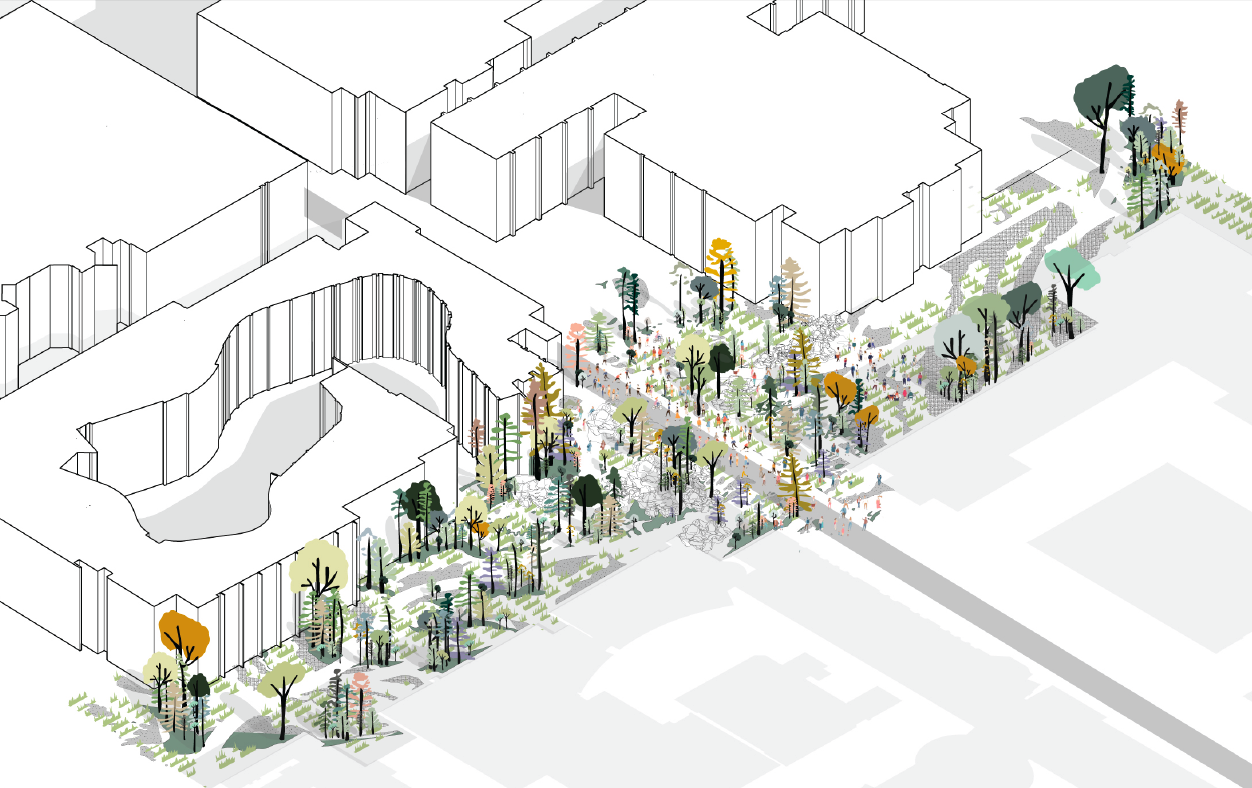
Embodied Energy: Living Lab
LAN 1012: Design Studio 2,
University of Toronto: John H. Daniels Faculty of Architecture, Landscape and Design
The contemporary city and its Modern urban infrastructure has been dependent on a linear stream of material and economic flows – starting at the site of extraction, moving through production, consumption with a final destination at disposal. This process of designed obsolescence has relied on the exhaustion of non-renewable natural resources often situated on the contested territories of Indigenous peoples. Our project takes into consideration embodied energy –the total sum of energy used to extract, manufacture, transport, and assemble materials for the built environment. Our project asks, what vernacular materials can we employ when designing for the west district of U of T campus to minimize the impacts of our ecological footprint? How can we increase the porosity of material surfaces to relieve the pressures off of the city’s infrastructure? How do we implement a design that looks at closed loop systems of material and economic flow? At the same time, energy is also understood from a spiritual point of view. “Within many Indigenous worldviews, objects are keepers of memory, and even more than that, are inscribed with or possess an animacy of their own.”[1]. In Embodied Energy: Living Lab, we wanted to encourage the praxis of ‘land as pedagogy’ by establishing the conditions for a ‘living lab’ that would further the study of urban ecology by examining the relationships between the city’s materiality and robust, resilient, and adaptable species found within alvar habitats in Ontario.
[1] Bryan-Wilson, Julia. “Rebecca Belmore: Material Relations” in Afterall, A Journal of Art Context and Enquiry, 2018 (45), 43-49
